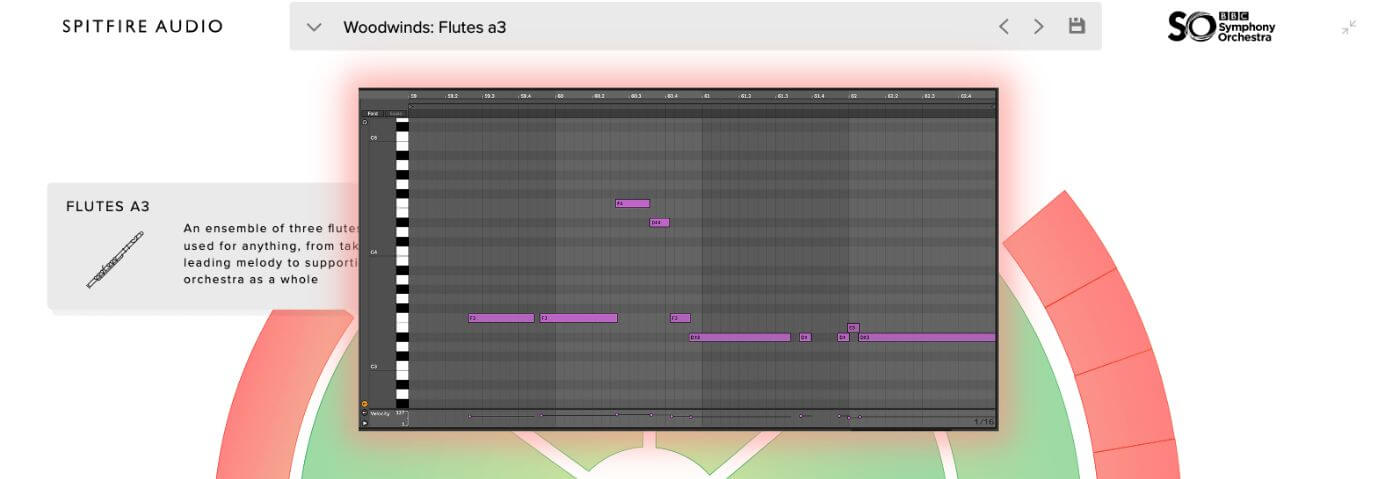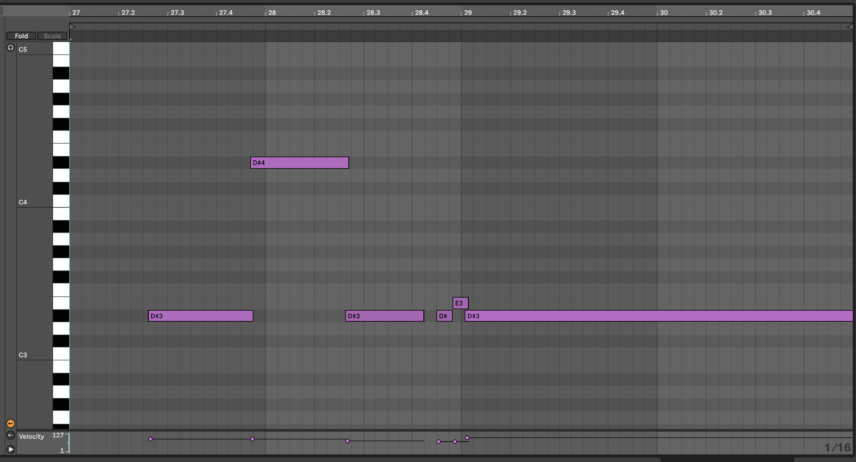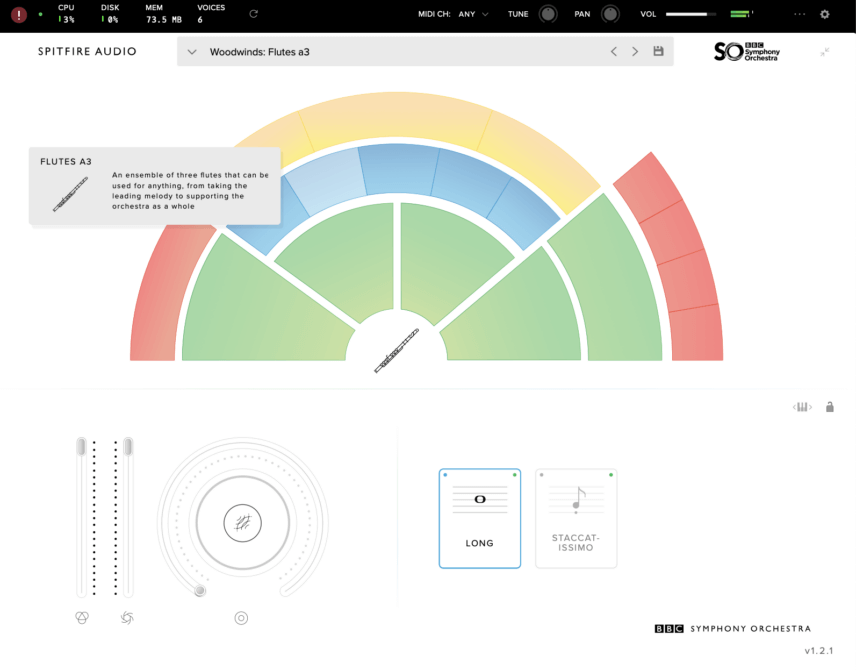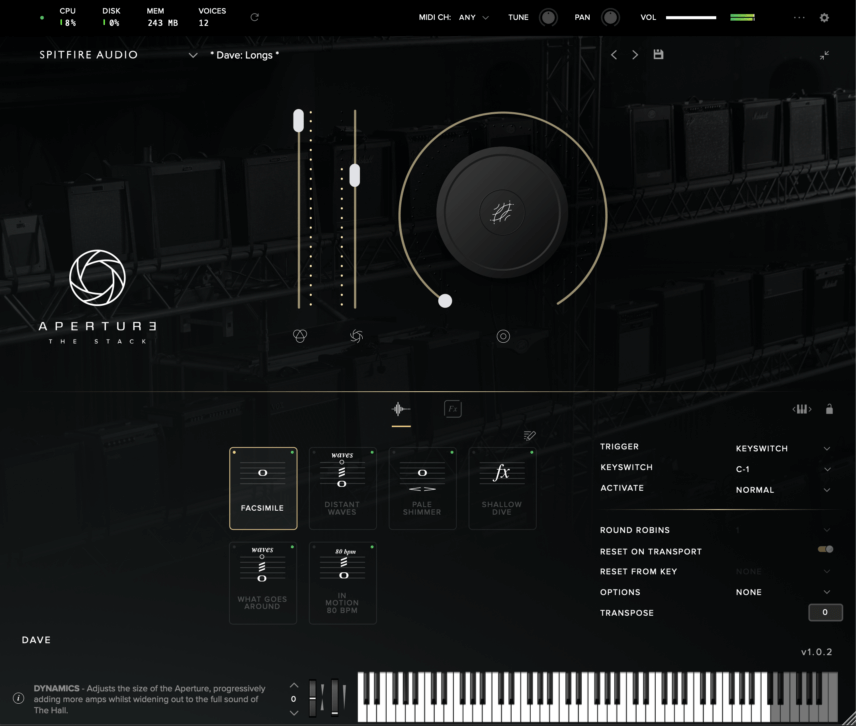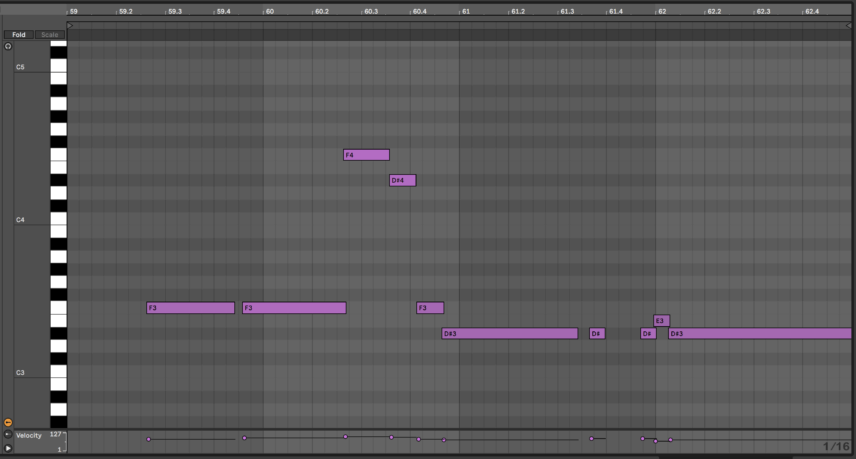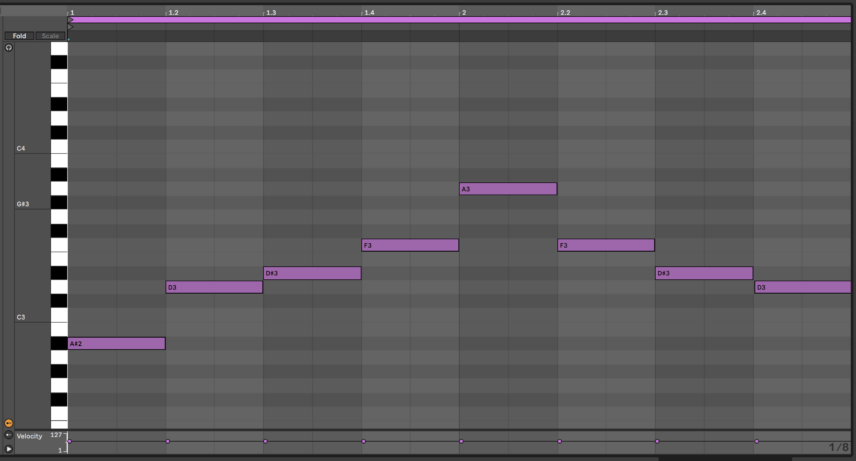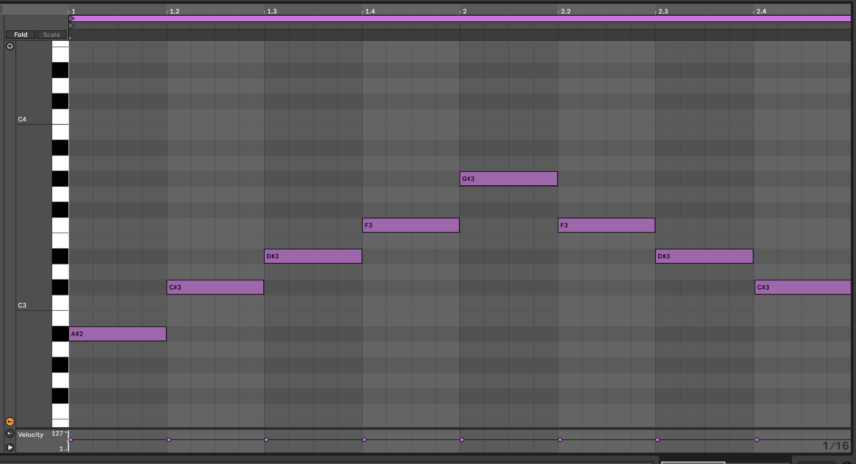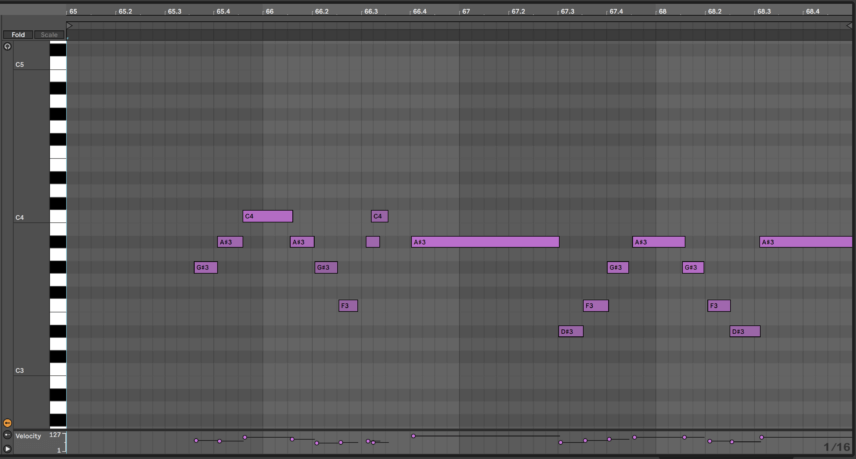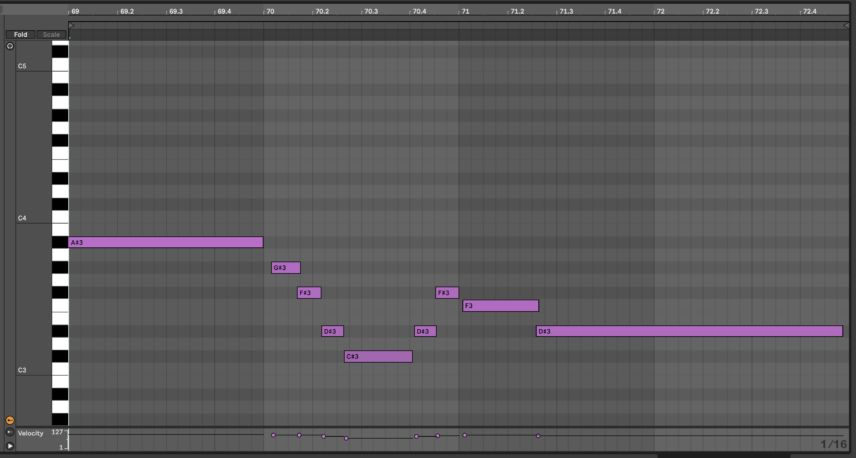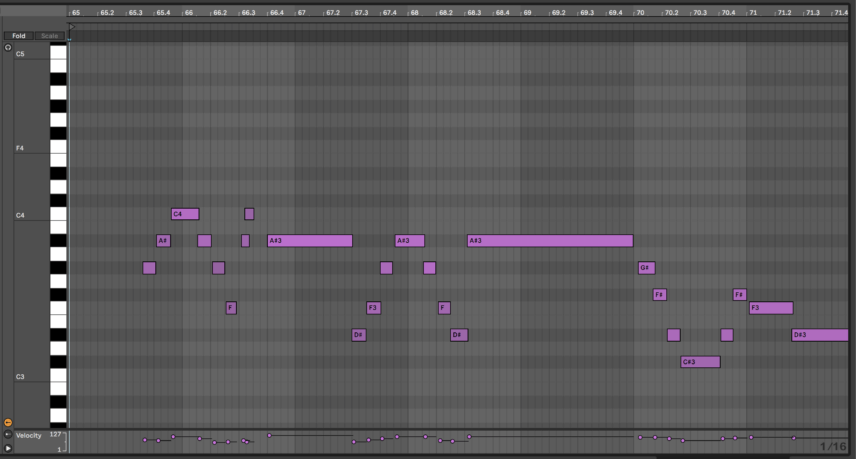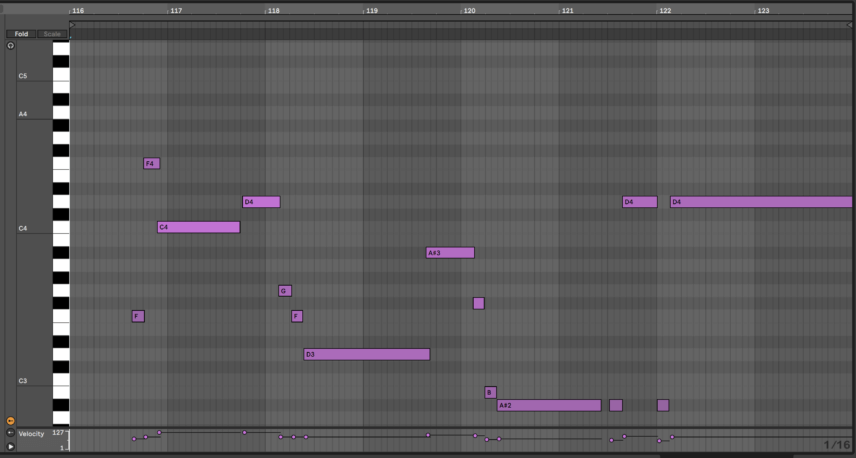In this new Passing Notes we look at different dance music melodies and composition techniques.
In recent Passing Notes articles we’ve been heavily focusing on chords, chord progressions, and basslines. However, the melody (or topline) can be the make or break element of your track. As such, we want to explore and widen our ideas for composing melodies, which can also be a quick cure for writer’s block!
We’ll be using one chord progression to apply the techniques, but we recommend that you focus on the general points in order to implement them in your own chord progressions, tracks and productions.
Here are some of the melodies from the examples we’ll be breaking down:
You can download the project file containing the MIDI files below.
As ever, remember to click any image to enlarge!
Method 1: Using Common Tones
Our chord progression is Db Major7 in its root position, C Minor7, Ab Minor (add 9) without using the 5th degree note Eb, and finally G Minor 7 – again without the 5th degree note D.
The chord progression contains chords that belong to different scales, which in itself is already a step on the route to composing unique melodies!
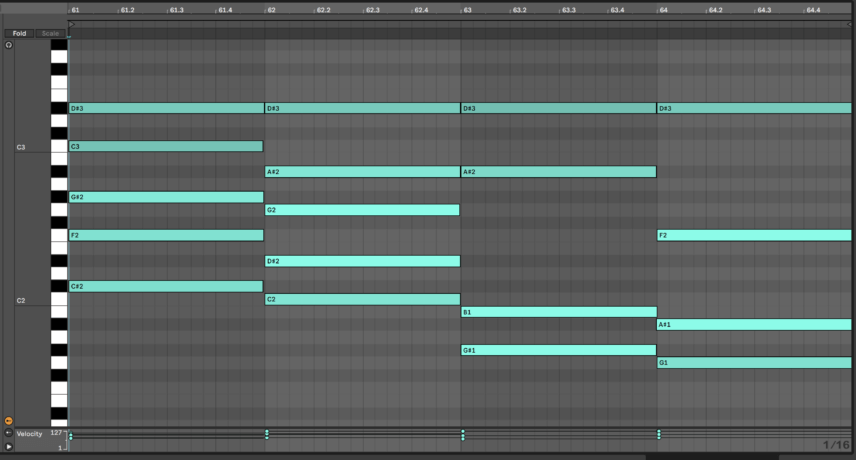
N.B for methods two and three we’ll be doubling the length of time each chord plays!
A lot of the time the most beautiful melodies are the result of keeping it simple and minimal while picking musical notes. A way to improve on this is to think about the common/mutual notes between the chords. We can look at the individual scales of each chord in order to find the common notes:
Db Major: Db Eb F Gb Ab Bb C
C Minor: C D Eb F G Ab Bb C
Ab Minor: Ab Bb B Db Eb E Gb
G Minor: G A Bb C D Eb F
Looking at these, the note Eb stands out – here is an example melody almost only using this note:
We’re using the common tone, while also jumping up and down on the octave. We’re also making a quick chromatic transition to Eb from E to create an effect of tension and release.
For the melody, we’re using the Flutes preset from Spitfire Audio’s BBC Symphony Orchestra Discover. For the bass sound, we’re using the Dave: Long Fascimile preset from their Aperture: The Stack instrument.
Here is another example in which we use F as the keynote for the melody in the first two chords, and then Eb again for the final two chords:
Method 2: Pentatonic Scales and Rhythm
Another great way to create a musical melody is by using phrases based on mutual pentatonic scales that these chords have. Pentatonic scales are basic cut-downs of minor and major scales that only include the root, 3rd, 4th, 5th and 7th notes.
Finding pentatonic scales with notes that two chords have in common may sound a little bit complicated but it’s actually quite simple! While playing the chord progression with your left hand or having it play in the background within your DAW, you can experiment with different pentatonic scales and see which works best during both chords.
Let’s try this method for the first two chords Db Major and C Minor. We’ll play the pentatonic scales ascending for the first chord and then descending for the second.
You’ll have to push through some dissonant sounds while doing this. For example, we’ll now switch to the Tenor Trumpets preset in BBC Symphony Orchestra Discover and start by trying a Bb Major pentatonic scale and it doesn’t sound great.
Let’s try a Bb Minor pentatonic instead:
This sounds much better but we can keep trying until we find a favourite!
After experimenting with a couple we found that the F Minor pentatonic scale works. This scale contains the notes F Ab Bb C Eb that work for both Db Major and C Minor:
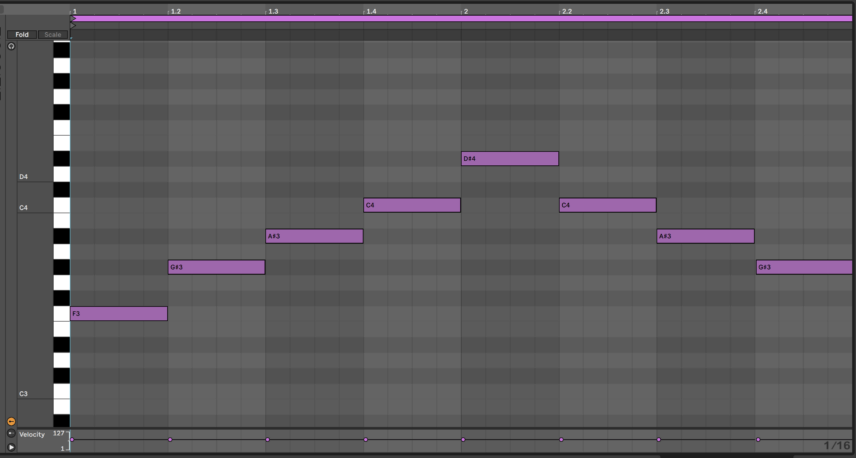
In the first half of the melody we create with this technique we’ll have the notes descend the F Minor pentatonic scale starting from the note C:
The use of one scale between two chords gives colour and musicality to the melody.
For the last two chords we’ll use the root pentatonic scales instead of common pentatonic scales. This means that in the Ab Minor we will descend the Ab Minor pentatonic scale and then in G Minor we’ll go back to G minor pentatonic, descending from F instead of the root.
Here’s how this sounds:
Here’s the full melody:
One other important aspect of this last melody we looked at is changing rhythms. If the rhythm is not dynamic the result can be a soulless and robotic melody. Making sure to use varying rhythms like eighth-notes, 16th-notes, triplets, quarter notes and more in one melody is a good assignment to give yourself before starting to write.
If you combine interesting rhythms with musical note choices you’ll start to write very unique melodies.
Method 3: Arpeggio-Based Melodies
Speaking of rhythm, one more way you can use variety in rhythm is with melodies based on arpeggios. When using an arpeggiator, unless you’re doing a lot of automation, patterns will sound very repetitive. However, when playing or writing melodies manually you can manipulate the timing of the notes more effectively.
Let’s take this next melody for example. We’ll play short arpeggiated phrases, either putting in space or using patterns with slower rhythms in between the arps. For the arp notes we’ll use roots, 3rds, 7ths and 9ths – you can always add more but limiting yourself can be good for creativity!
We’ll also now switch to the Oboes preset in BBC Symphony Orchestra Discover.
In the first chord, we’re using Db Major’s 3rd F and 7th C. Then we take a break, starting the next C minor phrase from it’s add 9 note D. Instead of starting it with the eighth notes as we did in our first phrase, the D is a dotted quarter note (which has a length of 3 8th notes), giving space for the melody to breathe.
After descending D G F D (play) from C Minor, we’ll play a similar pattern in the Ab Minor with different notes. We’ll use Bb Gb B Bb, which are the 9th 7th and 3rd degree notes of the chord.
Finally, for contrast in the last G Minor chord, we can make a wide leap between the notes Bb and D from the G Minor triad, again using less notes and sounding less robotic compared to an arpeggiator.
We’ll be sure to look at more techniques for writing melodies in the future so stay tuned!
Final Thoughts
Ask someone what their favourite song is and there’s a good chance they’ll sing the melody first to let you know. Melody sticks with people, both those who are musical and those who are not! Some of the most famous melodies are the most simple and that’s as true in classical music as it is in dance music. Just ask Robert Miles or for a more current example bite the ear off Denis Sulta.
*Attack Magazine is supported by its audience. When you purchase through links on our site, we may earn an affiliate commission. Learn more.
